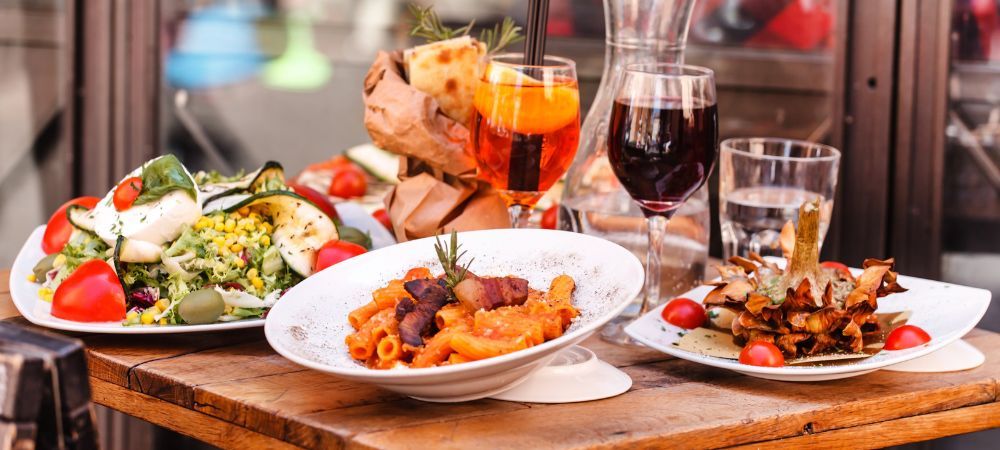

Safe cooking temperatures are not something to be taken lightly. It is important to make sure that food is cooked at the right temperature in order to avoid foodborne illnesses. Get access to further information click on it. If we don't cook our food properly, we can get sick! Nobody wants that, right?
When cooking meat, it's crucial to make sure it reaches a safe internal temperature. This means using a meat thermometer to check if the meat has reached the recommended temperature. If we don't do this, there is a risk of harmful bacteria surviving in the meat and making us ill.
It may seem like a hassle to always be checking the temperature of our food, but it's worth it in the end. By following safe cooking temperatures, we can ensure that our meals are not only delicious but also safe for us to eat.
So next time you're in the kitchen, remember how important it is to cook your food at safe temperatures. Don't take any risks when it comes to your health - always cook your food thoroughly!
When it comes to cooking meat, it is important to remember the recommended internal temperatures for each type of meat. These temperatures are crucial in ensuring that the meat is cooked thoroughly and safe to eat.
For instance, beef should be cooked to an internal temperature of at least 145 degrees Fahrenheit. Chicken, on the other hand, should reach a minimum internal temperature of 165 degrees Fahrenheit. Pork should also be cooked to an internal temperature of 145 degrees Fahrenheit.
If these temperatures are not reached, there is a risk of harmful bacteria surviving in the meat and causing foodborne illnesses. So, it's essential to use a meat thermometer to check the internal temperature and make sure your meat is cooked properly.
Remembering these recommended internal temperatures can help you avoid getting sick from undercooked meat. So next time you're cooking up a delicious meal, make sure to follow these guidelines and keep yourself and your loved ones safe from foodborne illnesses.
Molecular gastronomy, a self-control that uses scientific principles to food preparation, was promoted in the late 20th century and challenges standard understandings of food appearances and tastes.
Sushi, initially a approach of protecting fish in fermented rice, came from around the Nara period in Japan and has actually developed right into a popular worldwide food.
Sous-vide, French for "under vacuum," is a approach of food preparation in which food is vacuum-sealed and after that positioned in a water bath at a precisely managed temperature level, leading to remarkably tender and tasty dishes.
Chocolate was consumed as a bitter, foamy drink instead of a sweet edible reward by the old Mayans and Aztecs, greatly different from the chocolate we appreciate today.
Overall, I gotta say this restaurant ain't worth the hype.. The food was mediocre at best and the service was downright terrible.

Posted by on 2024-05-14
When cookin' poultry, it's important to follow guidelines to prevent foodborne illnesses. Don't overcook the meat, as this can lead to dry and tough chicken. Make sure ya cook the poultry to the proper temperature to kill any harmful bacteria that may be present. Ya don't wanna risk gettin' sick from undercooked bird!
It's recommended ta cook poultry ta an internal temperature of 165 degrees Fahrenheit. This ensures that all parts of the bird are cooked thoroughly and safe ta eat. Don't rely on appearance alone – use a meat thermometer ta check the temperature in the thickest part of the meat.
If ya stuffin' the bird, make sure the stuffing reaches a temperature of 165 degrees Fahrenheit as well. This will help prevent cross-contamination between the raw poultry and stuffing.
Remember, followin' these guidelines is essential for keepin' yourself and yer loved ones safe from foodborne illnesses when cookin' poultry. So next time you're cookin' up some chicken or turkey, be sure ta take care and cook it properly!


When it comes to cooking seafood, it's super important to make sure that it ain't undercooked. Undercooked seafood can lead to nasty stuff like food poisoning and other illnesses. So, making sure that your seafood is cooked properly is key!
One way to ensure that your seafood is cooked throughly is by using a food thermometer. This little gadget can help you check the internal temperature of the seafood to make sure it's reached a safe level. For most types of seafood, the safe cooking temperature is 145 degrees Fahrenheit.
If you don't have a food thermometer handy, another way to tell if your seafood is cooked properly is by checking its texture and color. Cooked seafood should be opaque and firm to touch, rather than translucent and mushy.
Overall, proper cooking temperatures are crucial for ensuring that your seafood is safe to eat. So next time you're whipping up some shrimp or salmon, remember to cook them thoroughly before digging in!
When it comes to cooking, it is essential that we make sure the food we prepare is safe to eat. This means ensuring that the temperatures are correct so as not to risk foodborne illnesses. Instead of guessing or relying on sight alone, using a food thermometer can help us accurately measure the temperatures of our food. It's not just about how long you cook something for, but also making sure it reaches the proper temperature to kill any harmful bacteria. Without a thermometer, there's no way to know for sure if your food is fully cooked and safe to consume.
So next time you're in the kitchen, don't forget about this important tool! It may seem like an extra step or hassle, but it's worth it in order to keep yourself and your loved ones safe from getting sick. Plus, once you get the hang of using a thermometer, it becomes second nature and won't slow you down at all. And hey, better safe than sorry when it comes to something as important as our health and well-being!


Alright, so let's talk about understanding the danger zone for bacteria growth in food when it comes to safe cooking temperatures. First off, we gotta know that bacteria love to party in temperatures between 40°F and 140°F. That means if your food is chillin' in this range for too long, those little buggers are gonna start multiplying like crazy.
Now, don't be thinkin' that just throwin' your food in the fridge will solve all your problems. Nope, that won't cut it. You gotta make sure you're cookin' your food to the right temperature to kill off any pesky bacteria hangin' around. Use a meat thermometer to check if your meats are hittin' the mark - poultry should be cooked to 165°F, ground meats to 160°F, and whole cuts of beef or pork to 145°F.
So remember folks, keep an eye on them temperatures and make sure you're cookin' things up nice and hot to keep those bacteria at bay. Stay safe and happy cookin'!
When it comes to storing and reheating leftovers, there are some tips you should follow to make sure they stay fresh and tasty. First off, never leave your food out at room temperature for too long. This can lead to bacteria growth and spoilage. Instead, always store your leftovers in the refrigerator or freezer promptly after eating.
When it's time to reheat your leftovers, make sure you do so thoroughly. Don't just heat them up for a few seconds in the microwave and call it good. Make sure that they reach a safe cooking temperature of at least 165 degrees Fahrenheit to kill any harmful bacteria that may be lingering.
Another tip is to avoid reheating your leftovers more than once. Each time you reheat them, you run the risk of diminishing their flavor and texture. It's best to only reheat what you plan on eating in one sitting.
By following these simple tips, you can ensure that your leftovers maintain their freshness and flavor for as long as possible. So next time you have some extra food lying around, remember these guidelines to keep yourself safe and satisfied!
